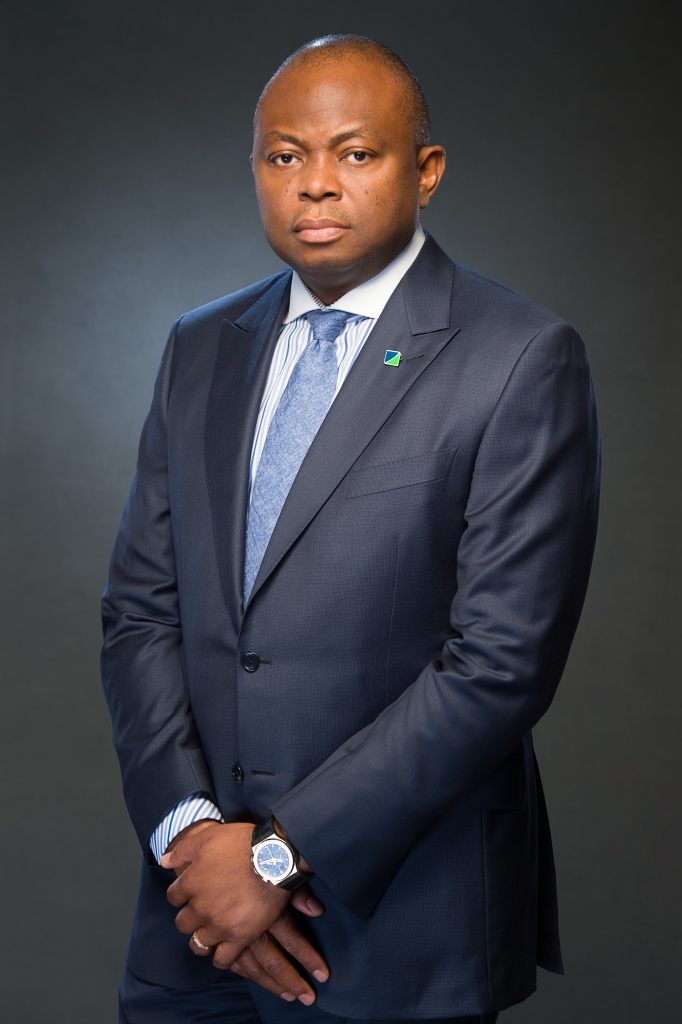By Lanre Issa-Onilu
There are enough sentiments to throw around over who was the better between Waidi Ayinla Omowura and Sikiru Ayinde Barrister. Tons of emotive writings are being churned out. Many prominent and respected Yoruba intelligentsia, music enthusiasts, and dyed in the wool fans of the two musicians are only stopping short of baying for blood.
Fanaticism is the lot of dogmatic followers. As it is in music, so it is in religion, ethnicity, and sports. People who are fans and adherents are psychologically wired to view issues from a narrow prism. The sentiments must soothe the mind; otherwise, the other person is utterly wrong.
The current controversy was thrown up by no other person than Dr. Festus Adedayo, a habitual dialectics stirrer. Most of the people that have intervened in this controversy have joined the fray holding a mirror, unabashedly reflective of only their own sentiments. I am quite amused by the emotive exchanges that are expectedly clearly bereft of objectivity.
How do you compare greatness? What are the parameters to weigh ingenuity? Greatness is absolute. It connotes purity of accomplishment; it is of pristine quality. The Free Dictionary describes greatness as “something meriting the highest praise or regard.” You can have two greatnesses; each existing in its grandeur. The great poet, William Wordsworth, writes in the poem, Longfellow, that “great men stand like solitary towers in the City of God.” Pounded yam and amala are two sumptuous Yoruba delicacies. You may like one more than the other, but you cannot begin to assert the superiority of one over the other. It is like a work of art; as you see it. I will come to this in due course.
What did the cerebral Festus say this time that has unhinged many fans of the Fuji creator? He made an outlandish claim in an otherwise gritty article. With an uncanny finality, he claimed that Ayinde Barrister’s greatness was made possible by the early passing of Ayinla Anigilaje, the Apala crooner. He went ahead to throw a challenge to anyone with a contrary opinion, mentioning a few well-known Ayinde Barrister’s fans.
It was bait. And the first person to fall for it is the fierily passionate writer and deep minded, the “my 10 kobo” exponent, Gani Kayode Balogun. He knew Festus was setting him up for intellectual brickbats. Never ever afraid to stand up for his conviction, he took up the gauntlet. He stoked the fire with facts of the matter, postulating that Ayinde Barrister had gained prominence and accomplished feats exceeding the reach of Ayinla Omowura, while both were still alive. He was specific in his postulations. I have no intention of recounting his facts here.
The two musical giants have enough foot soldiers that have been kindling the raging fire of controversy. Festus has achieved his objective. He rolled the dice while staking a bet he never intended to redeem. It was to precipitate an intellectual discourse. Then, he must by now be sipping a cup of coffee, while reclining in his study, enjoying the bet takers throwing their own dices.
To be frontal about it, let me state that I am a rabid Ayinde Barrister’s fan. I define every other music and musician using the Fuji creator and Fuji music as a barometer. I have my reasons, which I will explain presently.
Unlike many fans of Fuji music and other music appreciators, I do not situate Fuji music as a different music genre to be compared to the older genres like Sakara, Apala, Juju, Afro, Dadakuada, highlife, Were, etc. I regard Fuji music as an offshoot, or rather, an aggregator of the older genres. Fuji music is what all the other genres are, and are not. This is the standpoint of the progenitor of Fuji music himself. These evolutionary trails of Fuji, if studied deeply, would show how the music style progressively mobbed other genres on its road to greatness.
Ayinde Barrister, in one of his interviews, had explained his grand strategy. According to him, he had not many fans of his own in the early ’70s, when he began to break into the socialite circles’ labyrinth with his new invention. The musical fans, patrons, and promoters of musicians were already taken by the established stars like Sanusi Aka, Yusuf Olatunji, Haruna Ishola, Bobby Benson, Tunde Nightingale, Ayinde Bakare, Rex Lawson, Ade Akinsanya, Ebenezer Obey, Fela Anikulapo, Segun Bucknor, I. K. Dairo, Victor Olaiya, Fatai Rolling Dollars, Roy Chicago, Eddy Okonta, Orlando Owoh, etc.
But trusting his own extraordinary talent and clear understanding of the path he had mapped for his new product, he set out to seize the platform from each of the reigning music genres by assimilation through imitation and adaptation.
Whenever he had the rear opportunity of an invitation to perform at a function in the early ’70s, he would sing the musicians’ songs whose fans were at such an event. It could be Sakara, Apala, Juju, or Afro songs. Being sure of his own dexterity, variegated melodious voices, creative rendition ability, and flexibility, he would captivate the audience with the songs that fit their tastes. They would dance and spray wads of naira notes and appreciate a budding star who had masterfully imitated the music of their music idols. They were taking mental notes. Ayinde Barrister was knowingly ingraining himself in the minds and hearts of notable socialites.
As time passed, he began to register himself across many Yoruba communities as a musician of note. His music began to enjoy concordance with the tastes of the socialites. He was becoming difficult to ignore. He became more daring, reaching for more prominent platforms to seize.
Around 1976, he began to stage a weekly show at the Miliki Spot, Ebenezer Obey’s entertainment arena at Ebute Meta in Lagos. While Obey was holding his shows on Thursdays’ night, Barrister was staging his on the night of Wednesdays, which was the same night King Sunny Ade had his shows at Sunny Que, at Wakeman Street, Ebute Meta.
It was a daring move for Ayinde Barrister to stage shows same night at a short distance away from Sunny Ade, whose music genre, Juju, had been fully established. But he chose to match his nascent Fuji with a trendy Juju. It was a courageous faceoff with the King of world beats. Barrister had begun to signpost himself and his music as an alternative to Juju.
Barrister and Sunny Ade were contemporaries in music, with less than two years between their ages. The two artists recorded their first albums on the same day at the same studio, TYC, at the Lagos Island, in 1966. Sunny Ade, however, rose to stardom well ahead of Barrister because his music style, Juju, was already well known and enjoyed rave review.
Sunny Ade was already a darling of the entertainment journalists. One of them was Elder Dayo Odeyemi, known as Hunter. He was an entertainment reporter with the Sketch newspaper headquartered in Ibadan and was very close to King Sunny Ade. He was in Lagos covering entertainment until he was summoned by his Entertainment Editor, Mr. Olutade Makinde from his head office in Ibadan. Chief Segun Osoba was at this time the Editor of Sketch. The ebullient journalist was queried why he was not covering the performances of a musician that was taking control of the Lagos social circles. Hunter’s call of duty and his editors’ directive took him to Miliki Spot to cover Barrister’s performance. This particular assignment turned out to be a journey of no return for him as he got stuck and won over by the captivating music of Ayinde Barrister.
Barry Wonder’s music had the same magical effect on socialites like Alhaji Adisa Osiefa, Chief Kolawole Oyadeji, Chief Abiola Ogundokun, Adeniyi Ogunsanya, Adebayo Ogunlade (Bayo Success) and many others. They were famous socialites, friends, and fans of King Sunny Ade. These people and many others had their tastes for Juju music swapped for Fuji of Ayinde Barrister. It was the same way many members of Ayinla Omowura Fans Club in Mushin got entrapped by the prodigious talent of Barry Wonder. And pronto, the likes of Fatai Irawo, Wasiu Mejindade, and many others switched from Ayinla’s Apala to Ayinde’s Fuji.
Suppose there was any conflict between the two of them. In that case, it could only have been spurred by the discomforting incursion Ayinde Barrister was making into the underbelly of Ayinla Omowura’s fan base.
Ayinde Barrister had fully baked his Fuji by 1977, having successfully navigated the challenges of the first half of the 70s, which postmarked Fuji’s formative years. He nurtured a behemoth of a musical genre that had morphed other genres into dancehall music. It is correct to say that Fuji never competed with Sakara, Apala, Juju, Afro and highlife. It started by imitating them and later began to adapt them. By the close of the 70s, the new genre had fully assimilated other genres into its fold.
Thus, in 1979, Ayinde Barrister defined his creation in his Fuji Raggae series 2, when he sang: “who can tell me the full meaning of Fuji sound…, Fuji sound is a combination of music, consisting of Sakara, Apala, Juju, Afro, Gudugudu, Aro, possibly, highlife.” In the same album, he went ahead to show the flexibility that the new style could afford. He adopted the Ebenezer Obey’s Juju, Haruna Ishola’s apala, and Fela Kuti’s afro with an unmatched artistry.
He warned in the same album that Fuji was no longer a local sound. It was not an empty boast. He had just recorded massive success in his Fuji Londoners album which preceded Fuji Raggae series 2. Around the same time, he released Fuji Disco, Fuji Funky, Afro Fuji, and sang in an Indian tune. He underlined his claim by the earlier musical tour to the United Kingdom in 1978.
Following his return from London and the release of a series of classical Fuji albums to signpost Fuji’s evolution and its limitless elastic flavours, Ayinla Omowura’s battle cry rang through the Yoruba music world, challenging Ayinde Barrister to a musical wrestling match.
For a garlanded strategist that Ayinde Barrister was, he knew there was no need to change tactic. He had deployed a soft war which had worked well for over a decade. Why should he accept new terms of engagement from a musician feeling the heat of his meteoric rise? He instead opted to remain unassailable. Like a team having upper hand over the opponents in a football match, Barrister cleverly sidestepped Ayinla Omowura’s combative challenge in his response in Awa o ja, an album released in 1979. You don’t waste bullets on a trapped prey, he must have reasoned.
Haruna Ishola, Ebenezer Obey, Sunny Ade, Ayinla Omowura, and many other great musicians dominated the social scene when Barrister was climbing the ladder of status. And as Gani Balogun posited, they did not need to die for him to reach the zenith. They were to be witnesses to history, the making of a successor. And Fuji was not a competitor to Sakara, Apala, Juju, afro, and highlife. They were precursors to Fuji, while Fuji was a successor to them.
The enduring attribute of Fuji can be found in its inherent flexibility. Full credit should go to Ayinde Barrister who combined foresight, extraordinary talent, creativity, and sound strategy in evolving a musical genre whose form is defined by its formlessness. In other words, by his own definition of what Fuji is and his many indeterminate and innovative renditions over four decades, Fuji can be just any music that a singer says Fuji is. This is where the mutability of the genre lies. This is where the greatness of Ayinde Barrister is.
Ayinla Omowura’s greatness remains intact and inscrutable. Not even Ayinde Barrister’s greatness can scratch it. It was apala genre, not Ayinla Anigilaje that Ayinde Barrister embroidered into Fuji. It is the same way the greatnesses of Ebenezer Obey, Haruna Ishola, Yusuf Olatunji, S. Aka, Sunny Ade and others remain indissoluble, neither by time nor by Ayinde Barrister’s greatness. It just happened that Barry Wonder appropriated what they all used to be. That is why 10 years after he died, he remains standing like a solitary tower in the world of music.















